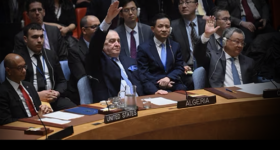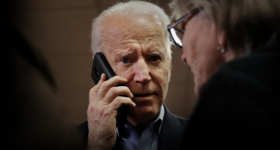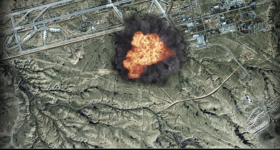“Appear weak when you are strong, and strong when you are weak.”
― Sun Tzu, The Art of War
21st Century Wire asks…
What’s behind Russia’s decision to drawdown military support in Syria?
‘MAKING A DEAL’ – Putin making a strategic deal before the Geneva III talks. (Photo link theaustralian)
This week Russia scaled back its military campaign against ISIS targets in Syria, after systematically directing months of successful airstrikes on terror groups within the embattled nation.
Russia’s partial departure and tenuous cease-fire in Syria, is a symbolic one, not only for the haunting ‘Ides of March’ historical significance, but also because it marks the five-year anniversary of Syria’s so-called “Arab Spring.”
When the campaign to topple Syrian leadership first began, we were told there was a legitimate grass-roots uprising sweeping across North Africa then through Middle East. The mainstream media gleefully exulted it’s praise as an organic movement of change, widely hailed as the “Arab Spring”. While the ‘Spring’ was sold to the public as a large protest movement, it was proven to be a well orchestrated socially engineered political uprising used to gain a foothold over Syria – opening the door for Western intervention.
Back in February, 21WIRE reported that ISIS jihadists were in fact fleeing from Syria, following the destruction of their operational bases within the country:
“Colonel Steve Warren of the US-led coalition said the terror group’s leadership has shifted its base of operations from Syria and Iraq, into Libya after facing immense bombardment:
“We believe this failure is due to several factors, the first and foremost I believe is the presence of devastating coalition air power.”
The Whitehouse added that ISIS is also now seeking to send jihadist recruits into Libya instead of Syria and Iraq.”
While US leadership mentioned that “devastating coalition air power” led to Syria’s good fortune, it failed to directly discuss Russia’s large role in silencing ISIS and other known militant fighting groups (some of who are still referred to by Washington as ‘moderate rebels’) through air campaigns of their own.
To anyone paying attention to the battleground in Syria, the message was clear – Washington now fully acknowledges the eventual eradication of many ISIS fighters, leading US policy makers to rethink their regime change strategy.
Recently, 21WIRE discussed a more cynical lens with which to view the cease-fire deal in Syria, noting that this peace agreement, could very well turn out to be a political ploy crafted by Pentagon war makers looking to re-arm militants in the region:
“This latest diplomatic development certainly appears positive on its surface, this week’s declared ‘Syrian Ceasefire’ – a three-way agreement between Washington, Russia and the Syrian government (and begrudgingly by the West’s other regional ‘stakeholders’) looks increasingly like it may just be the latest attempt to buy time – so that Washington, Turkey and Saudi Arabia can re-arm and replenish various militant fighting groups currently laying waste to Syria.”
Continuing, we see the West’s failure following the loss of proxy militants and why this brokered deal is perhaps their only political play at the moment:
“The Washington-led Axis has gradually lost proxy-control of a number of key terrorist strongholds in Northern Syria, namely in Aleppo, and thus are unable to dictate crucial ‘facts on the ground’ required to dictate the international media and political narratives. Unable to craft and package these narratives, the West and its dubious ‘coalition’ are completely unable to sell an escalation of military violence in Syria.”
From a propaganda perspective, the latest military move by Russia has prompted policy makers at Western think-tanks to characterize the strategic decision as a sign of a rift between Putin and Assad – but as we’ll see in the Sputnik News article below, the timing of the military drawdown has everything to do with the upcoming peace talk negotiations in Geneva.
More from Sputnik below…

‘ART OF WAR’ – Syria’s struggles appear to move from the battlefield to the boardroom. (Photo illustration Shawn Helton of 21WIRE)
Andrew Korybko
The Western and Mideast mainstream media are frenziedly spinning Russia’s planned drawdown from Syria as a military defeat and a betrayal of its key ally, but just exactly who is betraying whom?
President Putin announced that Russia will begin drawing down its military forces in Syria on 15 March, popularly known as the Ides of March and infamous for being the day that Emperor Julius Caesar was stabbed to death by his own allies.
While it may have been chosen innocently enough, the date is rich with symbolism and is quite fitting in describing the changing dynamics that are presently at play in the Mideast.
On this peculiar day of the year when things are typically not as they may initially seem to be, what’s being popularly portrayed as a “defeat” and “betrayal” is anything but, while the ones doing the premature celebrating are ironically the very same forces that should be concerned the most.
Nearly two millennia after the Ides of March were fatefully enshrined in history, it’s no longer the Roman Emperor that’s being betrayed by his allies, but the Turkish and Saudi ones that are being backstabbed by the US.
The Drawdown
Presidents Putin and Assad coordinated the decision to decrease the Russian troop presence in Syria, agreeing that the anti-terrorist operation had completed its stated aims of “combating terrorism and the restoration of security and stability to many regions in Syria”.
In particular, Russian Defense Minister Sergei Shoigu proclaimed that his country “carried out more than 9,000 flights” which contributed to “the Syrian troops liberating 400 towns and over 10,000 square kilometres of territory.”
The reader is encouraged to consult The Saker’s latest article if they’re interested in a detailed analysis of everything that Russia has accomplished thus far, but the present piece will now move on to describing the intent behind the drawdown and the contingency measures that are in place for defending Syria from any large-scale aggression against it.
From the Battlefield to the Boardroom:
Russia’s announcement was timed to coincide with the resumption of the Geneva III talks and clearly carries with it the symbolic message that Moscow is doubling down on its diplomatic commitment in resolving the War on Syria.
A de-jure partition is absolutely off the table and prohibited by UNSC Res. 2254, but there’s a creeping fear among many that a de-facto one could occur if federalization is ever implemented.
It’s perhaps for this reason why the Syrian government and its people are currently not in favor of this approach, and for curious readers who are wondering exactly what could be so bad about federalization, the author welcomes them to read his earlier published research on the topic that’s available at Russia’s National Institute for Research of Global Security.
After five and a half months of operation, Russia’s anti-terrorist air operation has succeeded in the herculean task of bringing the War on Syria to its final logical phase, which is the protracted negotiation process that has just recommenced.
The conflict has thus shifted from the battlefield to the boardroom, but in the lamentable event that foreign actors influence their political surrogates to sabotage the ongoing talks and reinitiate large-scale hostilities, Russia has a few back-up measures up its sleeve to make sure that Syria isn’t left unsecured.
More at Sputnik News…
READ MORE SYRIAN NEWS AT: 21st Century Wire 21st Century Wire Syria Files
















